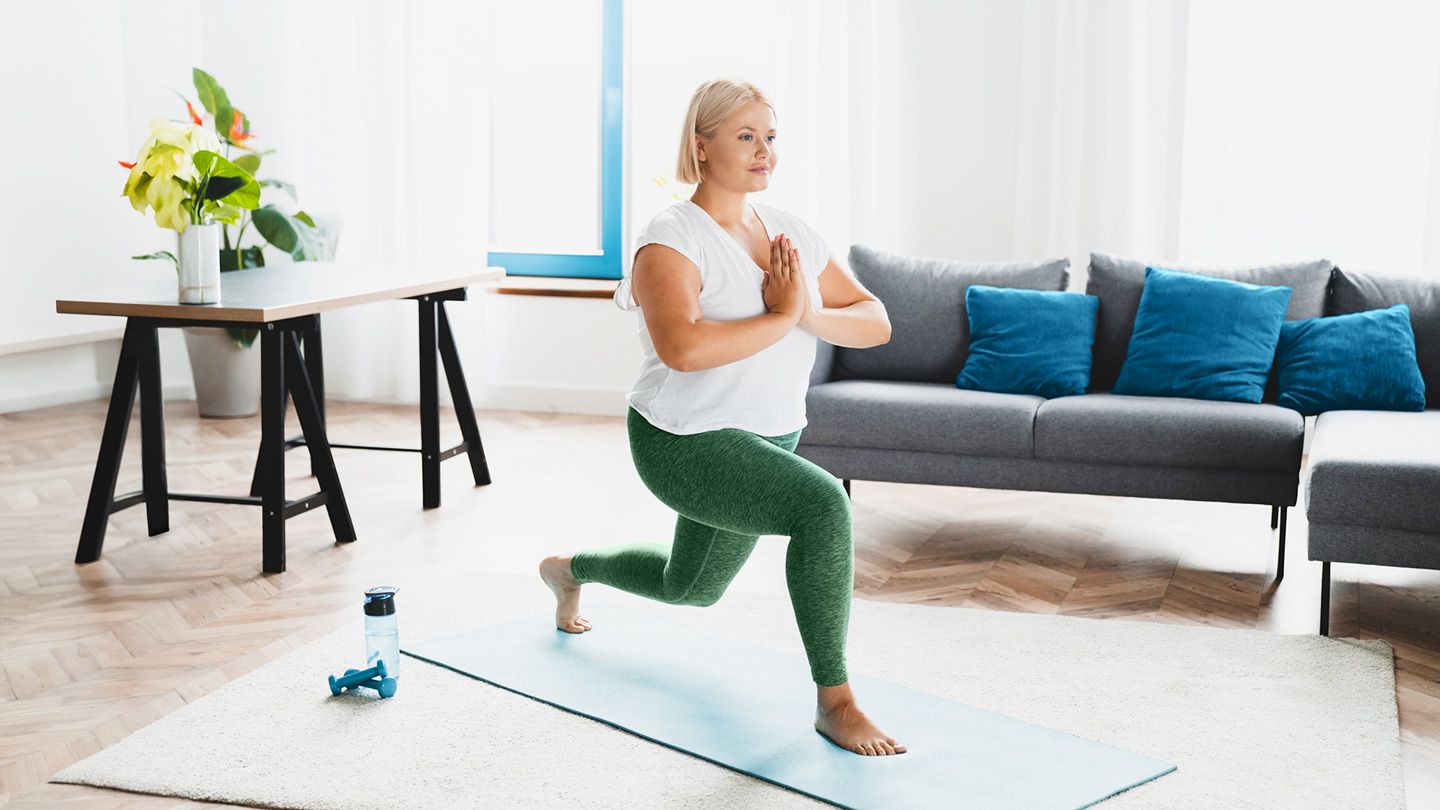If You Have Tight Hips, Do Single-Leg Glute Bridges and Chair Squats
If you have tight hips, the first thing you should do is work on your hip mobility. You need adequate range of motion in your joints and flexibility in your muscles to properly perform lunges.
“Each person is a puzzle,” Marko says, and must address their specific mobility shortcomings before trying lunges.
Start with single-leg glute bridges. If you can’t extend your leg behind you, lying glute bridges strengthen the hamstrings and glutes while stretching the quads, so this exercise is doubly beneficial for people with tight hips.
1. Glute Bridge
- Lie on your back with your knees bent and pointed up to the ceiling, feet near your butt.
- With your arms extended along your sides, press into your feet to lift your hips and back off the floor. You should be in a straight line from shoulders to knees.
- Lower back down with control and repeat.
Nicholas Rizzo, fitness research director at RunRepeat, says he may also point clients to chair squats. “With your chair backed against a wall, chair squats provide support, safety, and a reduced range of motion, all while targeting the same muscles,” Rizzo says.
Chair squats are also a great starting point to progress from, he says. “If you can only squat halfway down comfortably, then you can work on that part of the movement with a slightly higher chair.”
2. Chair Squat
- Place a chair behind you and step several inches away from it, standing with feet hip-width apart.
- Bend your knees and hinge your hips back until you’re sitting on the edge of the chair. Try not to put too much weight on it — just enough to support your balance and get you back to standing.
- Press through your feet to return to standing, squeezing your glutes at the top.
As you improve your mobility, strength, and form, you can progress to parallel box squats to deepen the movement. If you have any balance issues, do the exercise with your hands on a table or wall for support, advises Mayo Clinic.
Read the full article here




